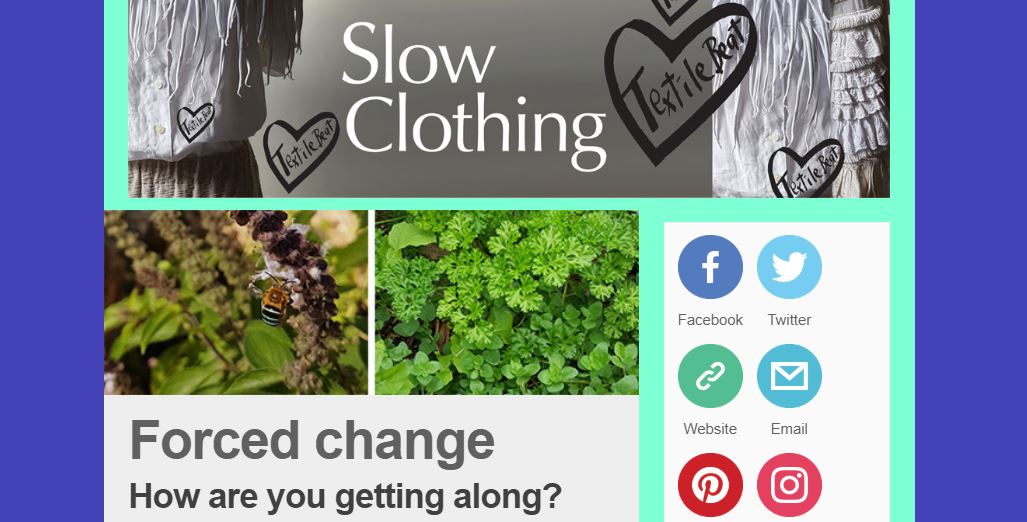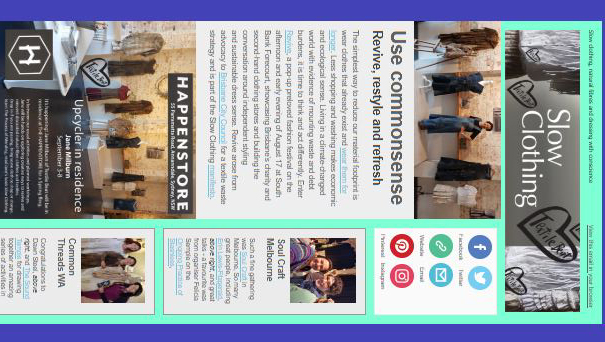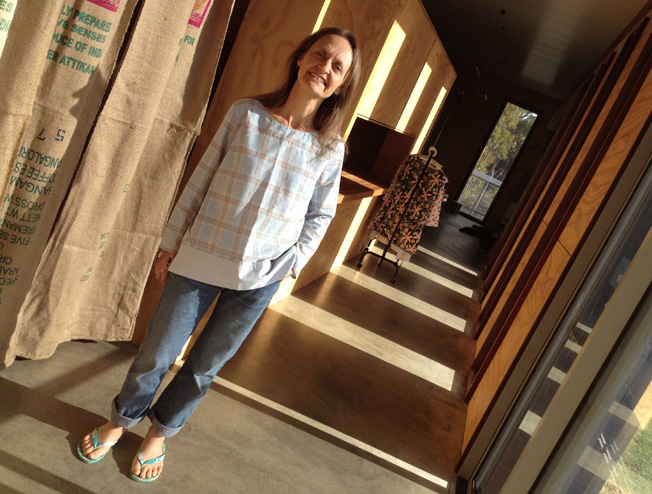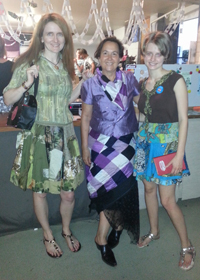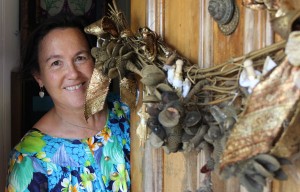Reusing and repurposing textiles that already exist is a practical and regenerative way to reduce our material footprint on the world and Eco Fashion Week Australia is asking upcycling designers around the globe to lodge Expressions of Interest in our 2024 EFWA Upcycling Challenge to share creative possibilities.
EFWA Upcycling Challenge coordinator Jane Milburn OAM said there is space for 100 applications which can be lodged from now up until April 12, 2024. Based on these applications, 30 designers will be short-listed and then 15 chosen to feature in the EFWA Upcycling Challenge Runway Collection at Busselton Western Australia in early November.
Interested designers are asked to choose a ‘hero’ textile that is made from dormant natural fibres and build on that textile to create a new unique garment with meaning and story fit for A Closet of the Anthropocene.
The ‘hero’ textile might be a damaged treasure discovered in a thrift shop, a family heirloom, a favourite outdated garment or something painted in art school. This textile can be repurposed along with other natural materials of choice into a storyful creation with the hero at heart.
“We are aiming to tell the story of how designers can transform the energy embodied in a treasured but languishing piece of material into a contemporary form that speaks to our need for sustainable, meaningful and comfortable everyday wear in the post-COVID era,’’ Jane said.
“By reusing existing natural resources and creating garments that have attachment value, the Upcycled Collection will be fit-for-purpose in A Closet of the Anthropocene (the current geological age shaped by human impacts) as fashion undergoes a biorennaisance.”
While the design brief is broad – create a meaningful garment using dormant natural fibres and incorporate a ‘hero’ textile with a story to tell – the materials brief is specific: please use predominantly natural fibres (linen, cotton, wool or silk). The upcycled garment needs to be locally, ethically produced and demonstrate use of traditional handmade textile techniques and craft. Strictly NO fur or animal parts.
In applying for the Upcycling Challenge, each designer is asked to submit an outline for their proposed garment (one garment per designer) along with their motivation and design experience by April 12. Thirty designers will be short-listed and 15 of these chosen to feature in the Upcycling Challenge Collection. More information will be provided closer to the event. NOTE: It is free to apply for the EFWA Upcycling Challenge, but the 15 designers selected to feature in the collection will be required to pay EFWA an entry fee of $300/designer for their garment to be featured in runway shows and art gallery exhibitions. Your garments do not need to be any specific size (size range 8-14 for girls, boys small or medium) and the EFWA team will arrange models to wear them in the showcase. Designers may offer their garments for sale as a way of recouping the entry fee. If the piece is unsold, the garment will be returned when the event is over.
Eco Fashion Week Australia will run for the month of November 2024 in and around Perth Western Australia and will feature more than 40 artists and designers exploring subjects and themes related to climate change. Learn more about Eco Fashion Week Australia here.
If you have questions about the Upcycling Challenge, please email Jane Milburn on jane@textilebeat.com Jane has been upcycling her clothing since 2013 as a way to spark action in response to fashion excess and textile waste. She is the founder of Textile Beat, author of Slow Clothing: finding meaning in what we wear and in 2022 was awarded an Order of Australia Medal for service to fashion sustainability.
